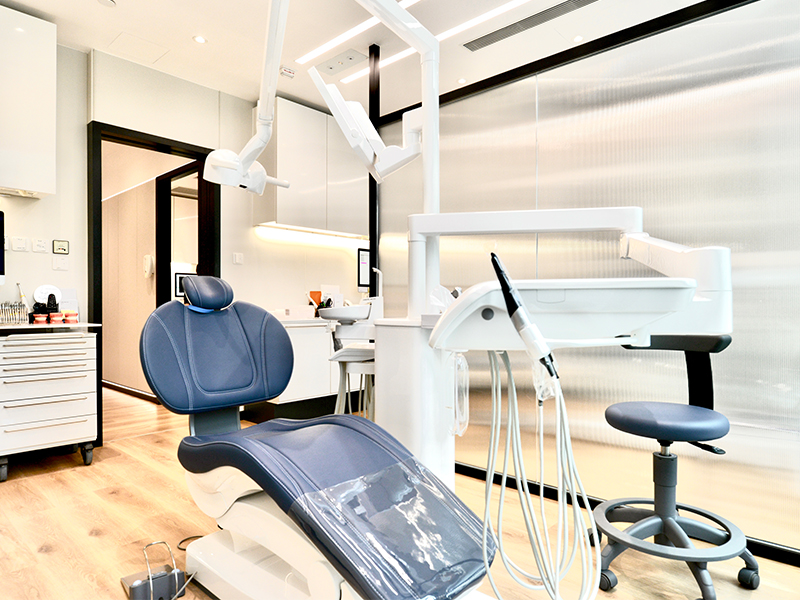Like me, many people don’t even know that they’re grinding their teeth – nor are they aware of the damage it’s doing over time. Here we chat to Hong Kong dentist DR DEREK BARAM to find out more about what is technically known as bruxism – and discover what can be done about it.
The daily grind
According to Dr Baram, while 20 percent of people have sleep bruxism (that is, they grind their teeth while they’re asleep), around 25 percent of the population are doing it while awake! We’re not sure how many actually know they’re doing it!
It was only when I changed dentists that I was shown how my teeth were wearing down in direct correlation to my bite; it was even affecting the enamel on the inside of my lower teeth. (I’m not sure why they refer to ageing as getting long in the tooth – it should be short in the tooth!) I have had both a mouth splint and a mouthguard made over the past couple of years. More on them below.

Our teeth can wear incredibly quickly, which is why it’s worth getting the issue checked out as soon as possible. On my last visit to the UK, I met someone I hadn’t seen for about three years. In that time, her teeth had literally become tiny pegs – and she was only 60. The issue now for her is that it’s really hard to do anything with them, and the solutions they’ve tried have been very uncomfortable.
I chatted with Dr Baram about the causes of teeth grinding and how it can affect us. If you’ve been experiencing a sore jaw, or jaw pain upon waking, or if you’re noticing you have worn, broken or even chipped teeth, then you might have bruxism too – so read on!
Why do we grind our teeth?
Teeth grinding is a physical manifestation of stress and anxiety; mental illnesses and neuroses are also associated with bruxism. It can also be due to incorrect bite, malocclusion or the teething of secondary or permanent teeth. There’s a genetic factor, too – parents who grind their teeth are more likely to have children who grind; in fact, in around 20 to 50 percent of adults with bruxism, the kids have it too.
The research is still contentious around whether it can be caused by allergies. Allergies can cause lymph tissues to swell up and block the nose; and any obstruction of this kind can result in bruxism.
There definitely seems to be a link between poor sleep and bruxism, especially if you’re prone to mouth breathing and sleep apnea. Between one and five percent of children have sleep apnea, but it’s often undiagnosed.
Who does it affect, and why?
Bruxism can affect adults and children alike. In both age groups, there are links to stress – in children, this might be stress about school, for example, or separation anxiety. Around 30 percent of five-to-six-year-olds are thought to grind their teeth. Interestingly, only three percent of over-60s grind, probably because the muscle strength is weaker – and because we’ve stopped worrying so much by that age! It’s also more prevalent in children who are affected by obesity and those with a narrow upper jaw, as well as children with a retruded lower jaw.
What are the consequences of teeth grinding?
There are obviously different levels of severity with bruxism – from mild (less than nightly) to moderate (nightly), which can have some effect on the teeth, to severe, which can cause damage to teeth and result in TMD, or temporomandibular disorders (problems related to the joint right in front of the ears).
Basically, our teeth are only supposed to meet for 20 minutes a day; so anything over that is going to cause damage. This damage can be in the form of wear on the teeth, attrition, gum recession, peeling away of the enamel, thinning of the bone or tooth fractures. It can also cause the teeth to become loose in the gum; this makes infection from food more likely, and then the gums can swell, leading to tooth loss.
In addition, teeth grinding is a cause of a condition called masseter hypertrophy, where there is increased muscle volume in the lower jaw, resulting in strong angles and a “boxy” look to the face. Some people – men, in particular – might like the idea of a stronger-looking jawline, but probably not at the cost of having tiny teeth!

What are some ways of minimising grinding?
As dentists, there are three devices we can use to help with bruxism.
- Mouthguards are a good solution for patients who have bruxism or jaw pain, as they protect the teeth and restrict movement. Adult mouthguards are quite strong, whereas for kids they’re usually softer.
- Made of hard acrylic plastic, mouth splints can take a bit of getting used to, as they don’t allow much movement. But they do feel stable and they enable a patient to bite together properly.
- The mandibular advancement device is an oral device that helps move the lower jaw forward; it’s useful for those who snore or have sleep apnea, both of which can have a harmful effect on the bite, and cause both wear and tear, and TMD too.
Mouth splints and mouthguards also help if you’ve had Invisalign or braces before. Teeth can shift, especially with grinding, so these help both the impact of the grinding and the alignment of the teeth.
What about non-dental remedies?
Relieving stress and anxiety in your life is the main one. This can be done in a range of ways – everything from simply making an effort to relax before bed time (or, in the case of kids, reading them a happy bed-time story) to CBT (cognitive behavioural therapy).
Medicines like anti-inflammatories can lessen grinding, and painkillers are useful if people suffer from TMD too. And Botox can help to relax the jawline. But none of these are a long-term solution.
What about dental treatments that can help save teeth from grinding?
To protect the biting surface of the teeth, composite fillers are the easiest option. It’s an additive process – so, there’s no drilling; but sometimes they don’t last that long – around five to 10 years. For a more long-term solution, there are porcelain overlays or crowns. These should last 10 to 20 years.
At Braces and Faces, we generally suggest composite fillers first, so you can test drive them; if this works and you feel comfortable, in time you can change the composite to the longer-lasting ceramic or porcelain style. Even with composite fillers, though, you can still use a mouth splint to make sure the teeth feel comfortable. And any patient with veneers should almost definitely wear a mouthguard if they grind, as they’re really easy to break.
Braces and Faces dental clinic is the sister practice of Central Smile and offers dental and orthodontic services in Wong Chuk Hang.
This article first appeared in the Spring 2022 issue of Expat Living magazine. Subscribe now so you never miss an issue.






